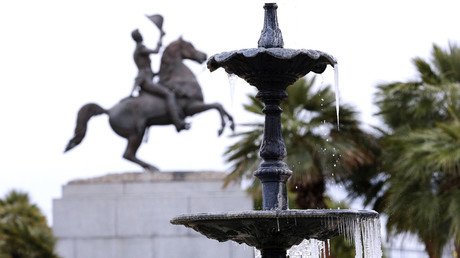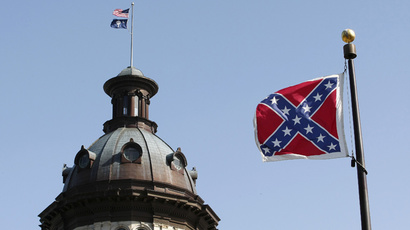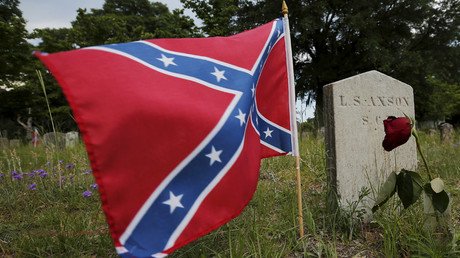New Orleans can remove Confederate monuments, court rules

Authorities in New Orleans have every right to take down monuments to Confederate leaders, a federal court has ruled, dismissing claims by historic preservation societies. The push to remove the monuments followed the 2015 Charleston church shooting.
Sons of Confederate Veterans, Monumental Task Committee, Louisiana Landmarks Society and the Foundation for Historical Louisiana argued that removing the monuments would cause irreparable harm and that the land they were located on may not be city property.
The three-judge panel of the 5th Circuit US Court of Appeals ruled on Monday that both claims “wholly lack legal viability or support,” according to the New Orleans Times-Picayune.
The groups “have also failed to show that any irreparable harm to the monuments – even assuming such evidence – would constitute harm,” the court said.
New Orleans gets court approval to take down Confederate statues: https://t.co/BnyqgIC8I3
— Daniel Dale (@ddale8) March 7, 2017
New Orleans Mayor Mitch Landrieu pushed for the removal of the monuments in 2015, dubbing them “nuisances” in the aftermath of the racially-inspired mass shooting at the Charleston Emanuel AME church.
The city is now free to request bids for removal of the monuments to Confederate President Jefferson Davis, and Generals Robert E. Lee and P.G.T. Beauregard. Another monument, commemorating a white uprising against the Reconstruction government, will remain standing pending unrelated litigation. The Battle of Liberty Place monument was previously moved as part of a federal transportation project.
“This win today will allow us to begin to turn a page on our divisive past and chart the course for a more inclusive future,” Landrieu said. “Moving the location of these monuments – from prominent public places in our city where they are revered to a place where they can be remembered – changes only their geography, not our history.”
The mayor hailed the court’s ruling as affirming “the city's ability to control its property” and said the monuments will be preserved at a city warehouse until an appropriate place for them can be found.
Activists pushing for the monuments’ removal were likewise pleased with the verdict.
“This is a huge teachable moment for the nation to learn about the dangers of white supremacy,” Michael Quess Moore, founding member of Take Em Down NOLA, told AP.
The Monumental Task Committee and the Louisiana Landmarks Commission said they were considering requesting an en banc hearing from the 5th Circuit, in which all 14 judges would be asked to reconsider the panel’s verdict.
"Despite this setback, the non-profit organizations that filed the original suit will continue to argue that all the City's historic monuments and cultural sites should be preserved and protected, and that a more appropriate response to calls for the monuments' removal is a program to include explanatory plaques and markers to present these individuals in the context of their time," the organizations said in a statement, quoted by the Times-Picayune.
Louisiana was one of the 11 states that seceded in 1861, protesting the election of Abraham Lincoln and vowing to preserve the institution of slavery in the Confederate States of America. New Orleans, the Confederacy’s second-largest city, was captured by Union troops in 1862 and remained under military occupation until the war’s end in 1865.
While Beauregard was born in New Orleans, Lee never visited the city. Jefferson Davis, the first – and last – president of the Confederacy, died in New Orleans in 1889.















